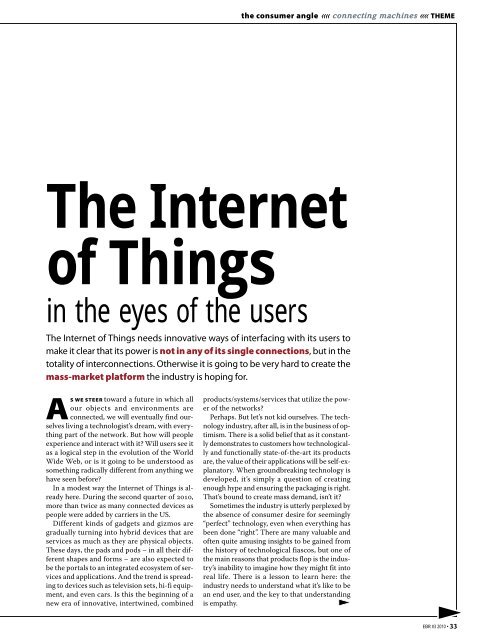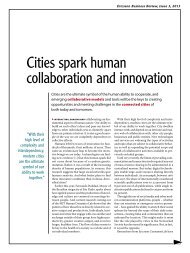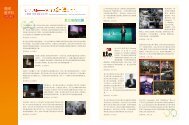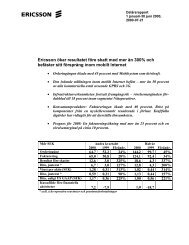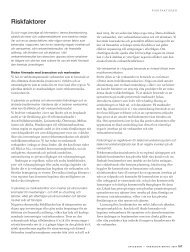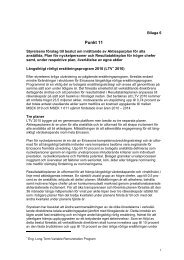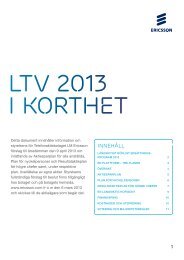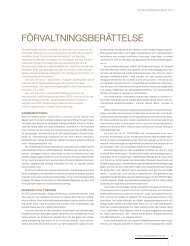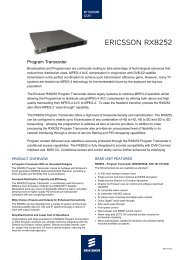Telenor's - Ericsson
Telenor's - Ericsson
Telenor's - Ericsson
- TAGS
- ericsson
- www.ericsson.com
Create successful ePaper yourself
Turn your PDF publications into a flip-book with our unique Google optimized e-Paper software.
the consumer angle «« connecting machines «« THEME<br />
The Internet<br />
of Things<br />
in the eyes of the users<br />
The Internet of Things needs innovative ways of interfacing with its users to<br />
make it clear that its power is not in any of its single connections, but in the<br />
totality of interconnections. Otherwise it is going to be very hard to create the<br />
mass-market platform the industry is hoping for.<br />
AS WE STEER toward a future in which all<br />
our objects and environments are<br />
connected, we will eventually find ourselves<br />
living a technologist’s dream, with everything<br />
part of the network. But how will people<br />
experience and interact with it? Will users see it<br />
as a logical step in the evolution of the World<br />
Wide Web, or is it going to be understood as<br />
something radically different from anything we<br />
have seen before?<br />
In a modest way the Internet of Things is already<br />
here. During the second quarter of 2010,<br />
more than twice as many connected devices as<br />
people were added by carriers in the US.<br />
Different kinds of gadgets and gizmos are<br />
gradually turning into hybrid devices that are<br />
services as much as they are physical objects.<br />
These days, the pads and pods – in all their different<br />
shapes and forms – are also expected to<br />
be the portals to an integrated ecosystem of services<br />
and applications. And the trend is spreading<br />
to devices such as television sets, hi-fi equipment,<br />
and even cars. Is this the beginning of a<br />
new era of innovative, intertwined, combined<br />
products/systems/services that utilize the power<br />
of the networks?<br />
Perhaps. But let’s not kid ourselves. The technology<br />
industry, after all, is in the business of optimism.<br />
There is a solid belief that as it constantly<br />
demonstrates to customers how technologically<br />
and functionally state-of-the-art its products<br />
are, the value of their applications will be self-explanatory.<br />
When groundbreaking technology is<br />
developed, it’s simply a question of creating<br />
enough hype and ensuring the packaging is right.<br />
That’s bound to create mass demand, isn’t it?<br />
Sometimes the industry is utterly perplexed by<br />
the absence of consumer desire for seemingly<br />
“perfect” technology, even when everything has<br />
been done “right”. There are many valuable and<br />
often quite amusing insights to be gained from<br />
the history of technological fiascos, but one of<br />
the main reasons that products flop is the industry’s<br />
inability to imagine how they might fit into<br />
real life. There is a lesson to learn here: the<br />
industry needs to understand what it’s like to be<br />
an end user, and the key to that understanding<br />
is empathy.<br />
▶<br />
EBR #3 2010 33


